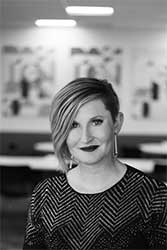Design planning software to enhance sustainable business practices.
By Erin Corrill, Global Head of Product Marketing at Configura
Company growth is a sign of success and constant innovation. In the design industry, new digital tools, software and other smart solutions are necessary for businesses to keep up with the rate of innovation and advancements happening on a global scale. As a result, companies are looking to reduce operational costs while enhancing process flow from design inspiration to installation. In addition to digital investments, manufacturers are looking to reduce carbon footprints and adhere to more sustainable practices.
The Environmental Protection Agency describes sustainable manufacturing as “the creation of manufactured products through economically-sound processes that minimize negative environmental impacts while conserving energy and natural resources. Sustainable manufacturing also enhances employee, community and product safety.”
Companies are striving for more sustainable practices for several reasons:
Some ways companies can improve efforts towards sustainability include:
Space planning can be a very complex process. It is defined as the selection and placement of actual products for use in a building—walls, desks, lighting, assembly lines, faucets and so on.
Before offices, warehouses or kitchens are ever ready for use, the last step in the design process is installation. This is where products need to be ordered, shipped, unboxed, assembled and placed. In this process, the upfront effort and energy put into creating a product is accounted for. Defined as embodied carbon, about half of all carbon emissions come from the individual products selected to outfit a building. Every product has an embodied carbon footprint.
There is a lot of time, effort and energy involved in building products, and unfortunately, a lot of unnecessary and costly waste. In fact, inaccurate orders due to entry error, missing product or the accidental shipping of extra products account for increased carbon emissions, as well as business profit losses of nearly 20 percent.
Order errors not only negatively impact a company’s bottom line, they can also expand the carbon footprint—two factors that have business leaders actively seeking trusted and innovative solutions to reduce errors throughout the design process.
Today, there is a renewed focus on sustainability in the design industry—especially in the sourcing, manufacturing and distribution of individual products. Digital tools greatly aid in these efforts. The infusion of automatic specifications in the design process is a prime example.
Let’s say a designer from Company Z finalizes and schedules a kitchen design order but one letter is mistyped in the cabinet specification. Because of this error, all the cabinets delivered for installation arrive in the wrong color. What does this mean for the project?
As one can see from the example above, one or more errors can easily require additional product manufacturing, packaging and transportation—all of which lead to increased carbon consumption and emissions—the opposite of the sustainable practices many global companies are working toward today.
With smart automation in place, more sustainable practices are made possible. Using design software with automatic specifications built-in means fewer redraws and mistakes, and therefore, a reduced environmental impact. Accuracy leads to fewer packaging materials, fewer transportation vehicles and less post-project waste.
When a company employs Configura products including Configura Extension Technology such as CET Material Handling, Spec and others to enhance support designing and selling spaces, it is choosing a software solution which not only improves the overall design experience, saving designers, salespeople and engineers valuable time, but the company is also investing in a product that inherently works to reduce environmental damage. In the end, companies are better equipped to achieve operational efficiency, build long-term business viability and both protect and strengthen its reputation with customers and the industry as whole.
Focusing on the rise of sustainable practices in the material handling industry and zeroing in on the power of design software to make orders more accurate—resulting in fewer redraws, reduced shipping costs and minimal product returns—will reduce costs. Confugra helps change the usual way of doing business to something far more efficient and sustainable.

About the author:
Erin Corrill has been the Global Head of Product Marketing at Configura for 1 year. Previous to that she was the VP of Customer Experience at ProjectMatrix where she lead the Training, Customer Support and Marketing departments. Erin has spent most of her career in front of a computer designing spaces for companies and clients, and when software was not capable of the design needs, drawing layouts by hand. When she is not working, she can be found building Lego sets, camping with her family or planning her next trip to Disney World.
In this episode, I sat down with Beejan Giga, Director | Partner and Caleb Emerson, Senior Results Manager at Carpedia International. We discussed the insights behind their recent Industry Today article, “Thinking Three Moves Ahead” and together we explored how manufacturers can plan more strategically, align with their suppliers, and build the operational discipline needed to support intentional, sustainable growth. It was a conversation packed with practical perspectives on navigating a fast-changing industry landscape.